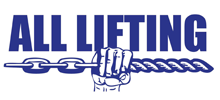
A QUICK GUIDE TO PIPE LIFTERS
Pipe lifters are essential for efficiency and productivity in the piping industry, as these items are often heavy, long and built with materials that need to be lifted in a safe, fast and efficient manner. It's crucial that you choose the correct concrete pipe lifter because if the correct lifting device is not used, it might result in harm or even death. Or if you decide not to use any device at all, this may lead to the pipe end breaking, causing extensive damage, faults, and/or misalignment. This could cost the installer hours of rework and or replacement pipes.
Concrete pipes are fitted with lifting points such as hooks or clamps, and then the lifting point is attached to a crane, excavator or forklift. Attaching concrete pipe lifters to pipes enables lifting and or lowering of concrete pipes into position and without manual intervention.
Common types of pipe lifters
Concrete pipe lifters are made to fit many different pipe sizes and can be custom made. Common types include scissor or lifting clamps, counter balanced plates and pipe hooks.
-
Lifting clamps are a three legged system designed for safe and non-marring transport of lift in a vertical position. Attachment and removal of the clamps is easy due to the handles incorporated into each clamp.

-
Scissor clamps use a jaw and pivot arrangement to apply pressure to either the round circumference of the pipe or the wall (end) of the pipe. They are called scissor clamps as they have a central pivot point like a pair of scissors. These scissor clamps are normally used with mobile cranes for quick and precise movement of pipes.
-
Counter balanced plates is a single central lifting device. It is lowered through the central rectangle hole in the pipe, it is then turned 45 degrees which activates the counter balance and pulls upwards to engage the pipe. This is a very fast efficient method for lifting pipes into position, the device will self disengage once the pipe has been placed onto the ground. These plates are generally used in conjunction with excavators moving single pipes into position.
- Pipe hooks are a steel plate that has been profile cut and machined to fit the end of a pipe. They are used in pairs and connected via a sling (generally a chain sling) the compression force created by the sling mean a positive and constant gripping force is applied to the pipe ends at all times. These hooks come in many sizes and working loads and are commonly used on crane trucks and all terrain loaders.
Uses of concrete pipe lifters
Concrete pipe lifters are used by landscapers and gardeners, plumbers, civil contractors, miners, construction workers and infrastructure contractors. They can be used from sole trader operations to the large multinational construction companies. Typical applications include moving or diverting water or sewage, bridge construction, oil field projects, and pipeline projects.
At All Lifting, we have a whole range of solutions for the pipeline industry. We can provide you with excellent industry advice to help you choose the right concrete pipe lifters and lifting devices for your application. Please do not hesitate to contact us or look at our online shop to find out all the different options.



